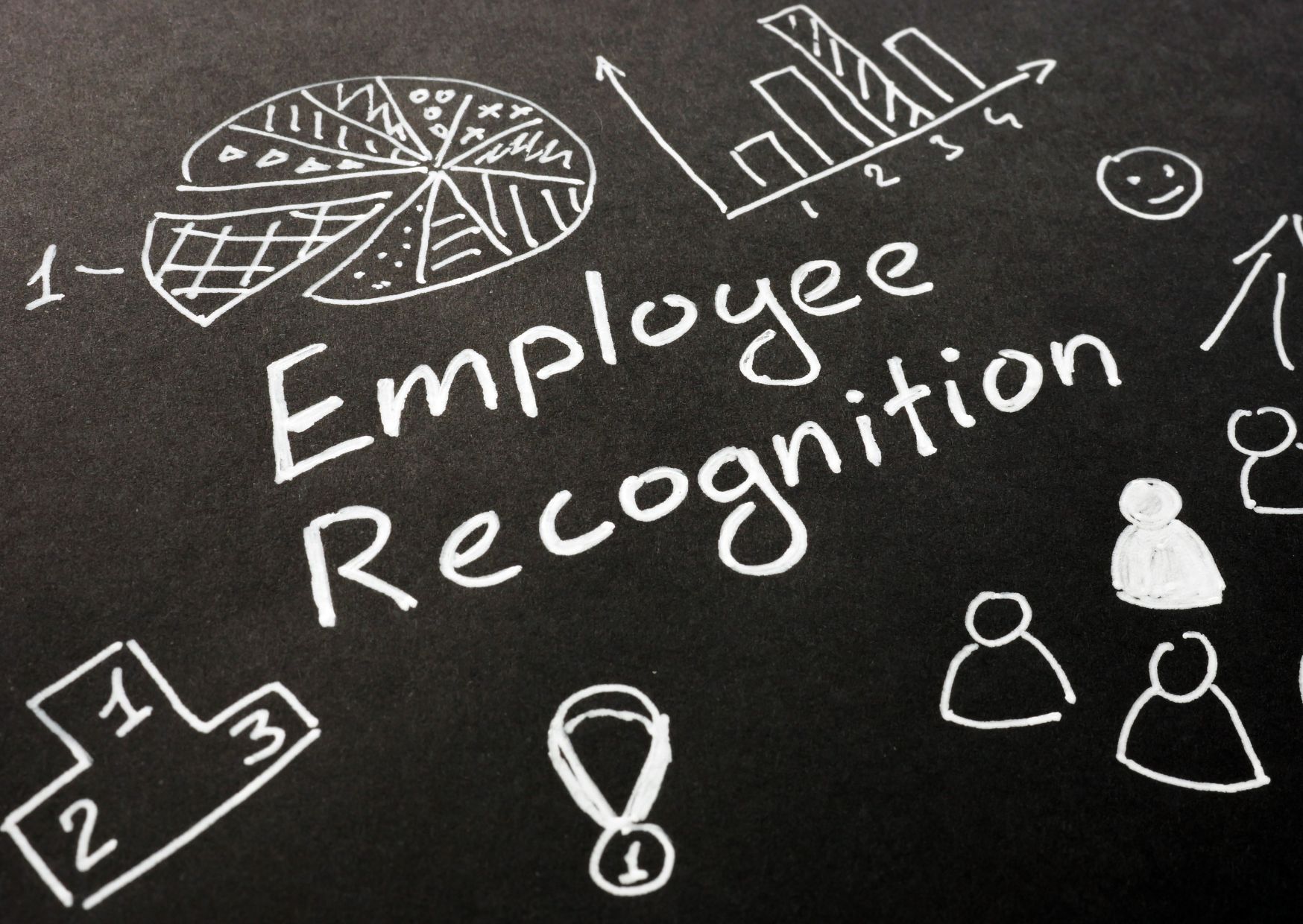10 Creative Employee Recognition ideas
Employee recognition – a concept that carries the power to transform work environments, boost morale, and increase productivity.
Yet, it’s often misunderstood or underutilized in many organizations.
As experts in employee health and wellbeing, we’re passionate about the potential of effective recognition and are eager to share our insights with you.
In this blog, we’ll navigate you through the importance and the financial benefits of implementing recognition initiatives.
We’ve also compiled a list of ten innovative recognition ideas, each designed to promote engagement and wellbeing.
Furthermore, we’ll delve into the key role leadership plays in successful recognition programs, potential pitfalls and how to avoid them, as well as the ideal frequency of giving recognition.
This comprehensive guide is designed to equip you, whether you’re an HR professional or a team leader, with the knowledge to harness the full potential of employee recognition.
Contents
10 Creative Employee Recognition ideas
Why are Employee Recognition Ideas Important?
What are the Financial Benefits of Employee Recognition Ideas?
Aligning Employee Recognition with a Company’s Core Values and Goals
The Role of Leadership in Effective Employee Recognition
Potential Pitfalls of Employee Recognition and How to Avoid Them
How Frequently Should Employee Recognition Be Given?
Ensuring Meaningful and Appreciated Employee Recognition
Wellbeing Programs and Employee Recognition: A Vital Connection
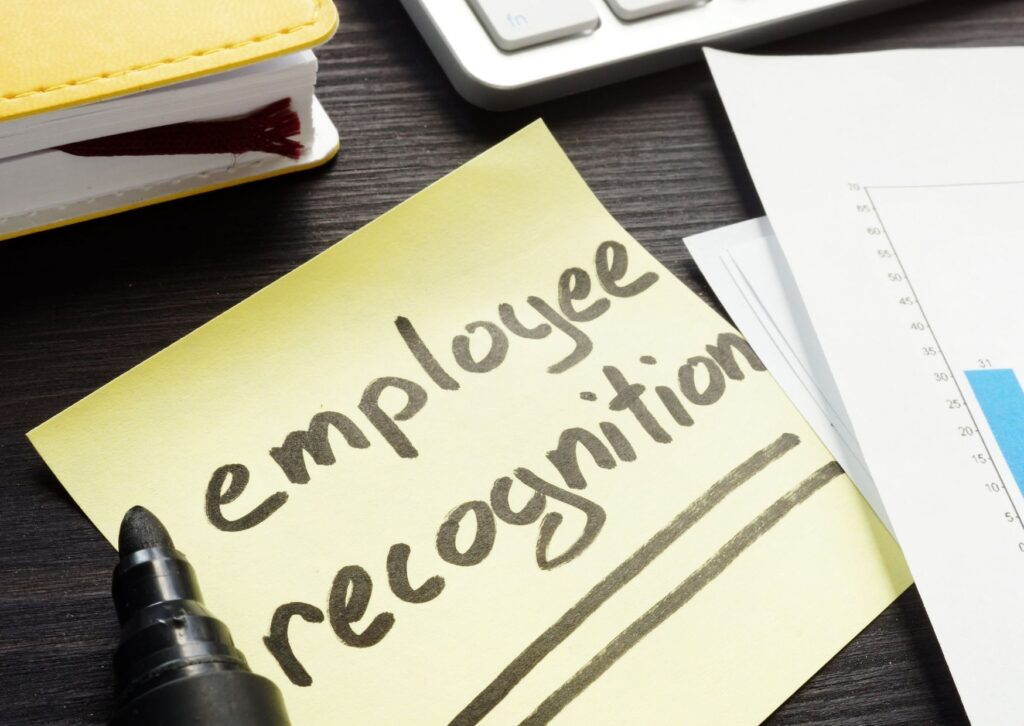
10 Creative Employee Recognition ideas
Employee recognition isn’t just about saying “well done”, it’s an impactful way to boost morale, increase engagement, and foster a thriving workplace culture.
But, how can you celebrate your employees in ways that resonate with them?
Let’s explore 10 creative ideas that will make your team feel truly valued.
1. Customise Appreciation Letters
The charm of a personalised note cannot be underestimated.
Instead of a generic ‘thank you’ email, spend a few more moments to write a customised appreciation letter.
Highlight the distinct contributions of your employees, discussing the positive impacts they have made.
Such specific and personalised recognition speaks volumes about your regard for their unique capabilities.
By appreciating the individual qualities each person brings to the team, you create an environment where every employee feels valued and acknowledged.
When employees realise their work is noticed and appreciated, they’re inspired to maintain their high performance.

2. Celebrate Successes Publicly
There’s a special kind of motivation that comes from being publicly recognised for one’s hard work.
Take advantage of team meetings, company-wide newsletters, or your company’s internal social media to give shout-outs to your employees.
By publicly acknowledging their accomplishments, you’re not only validating the efforts of the recognised employees but also setting a positive example for others to follow.
This encourages a culture of hard work, dedication, and mutual respect within the team.
Just remember to respect individual comfort levels.
Not everyone enjoys the spotlight, so it’s crucial to balance public recognition with private acknowledgments for those who prefer the latter.

3. Implement Employee Wellbeing Programs
Wellbeing in the workplace is a broad concept that extends beyond mere job satisfaction.
It’s about recognising and supporting your employees’ overall health and happiness.
Introducing wellbeing programs such as mental health resources, physical fitness challenges, wellbeing workshops, on-site massage and other activities is a great way to show that your organisation values its employees beyond just their work output.
It conveys the message: “We care about you as individuals.”
When companies prioritise employee wellbeing, they nurture an environment of mutual respect and appreciation that promotes personal and professional growth.
Remember, a happy employee is a productive and loyal employee.

4. Launch Peer-to-Peer Recognition Programs
Peer recognition is a powerful tool that can foster a positive and supportive work culture.
Initiating peer-to-peer recognition programs allows employees to appreciate each other’s efforts, promoting an atmosphere of mutual respect and collaboration.
When colleagues acknowledge each other’s contributions, it enhances team relationships, and boosts morale.
It could be a simple “kudos” system, an opportunity to nominate a team member for a reward, or an interactive platform where employees can share and celebrate their peers’ successes.
A culture that encourages peers to lift each other up strengthens team bonds and adds another layer of motivation for high performance.

5. Deploy Employee Recognition Software
Technology can play a pivotal role in employee recognition.
The digital landscape provides numerous software options that can facilitate seamless and instant recognition.
Such platforms allow managers and peers to recognise achievements in real-time, regardless of geographic boundaries, which is particularly beneficial in remote work scenarios.
Features might include “employee of the month” voting, achievement badges, or points systems that can be redeemed for rewards.
Implementing an employee recognition software shows your commitment to celebrating success and can make recognition an integral part of your work processes.

6. Celebrate Work Anniversaries
Recognising the longevity of your employees is an excellent way to show that you value their loyalty and commitment.
Make it a point to celebrate work anniversaries.
It could be a simple email or card, a shout-out in a meeting, or a small gift. Not only does this make the employee feel appreciated, but it also emphasises the significance of dedication and loyalty within your organisational culture.
In addition, publicly acknowledging these anniversaries can inspire newer employees and foster a sense of stability and continuity within the team.

7. Institute an Employee of the Month Program
Creating an ‘Employee of the Month’ program is a traditional but effective method of recognition.
This strategy showcases standout employees who have made notable contributions to the company.
It serves as a motivational tool for other employees to strive for the title as well.
Make sure the selection process is transparent and fair, based on clearly defined criteria, and ensure that the recognition comes with genuine appreciation.
This strategy can foster a healthy competitive spirit within the team and drive individuals to put their best foot forward.
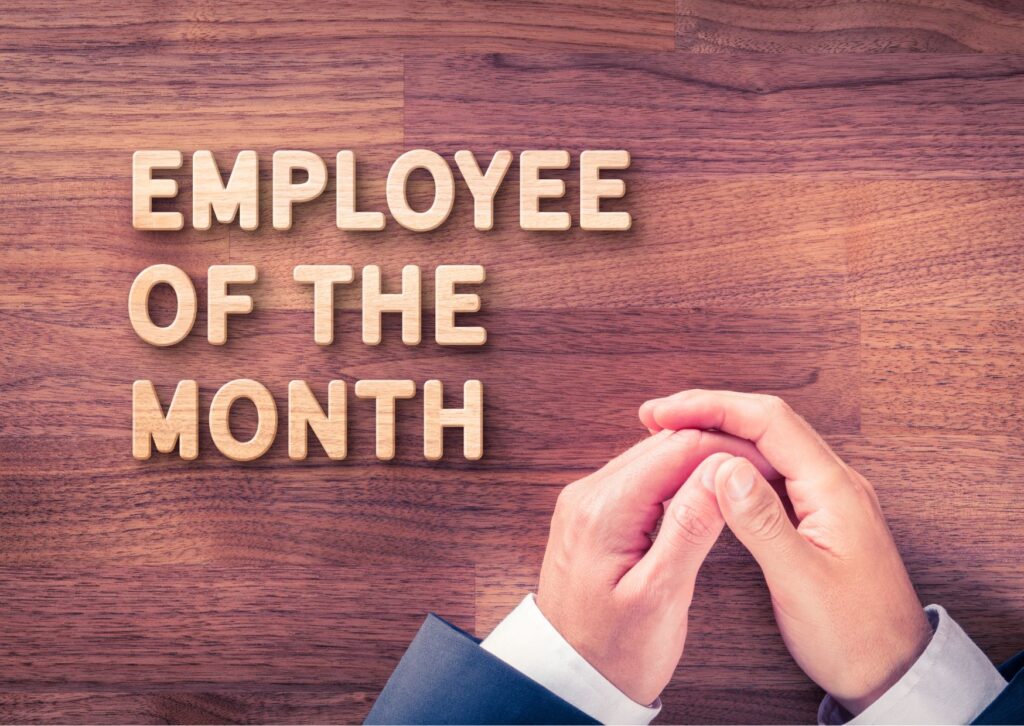
8. Initiate Spot Awards
When it comes to recognition, spontaneity can make a big difference.
Spot awards are a way to acknowledge the efforts of your team members immediately following an accomplishment.
This could be for a small victory, like solving a challenging problem, or going above and beyond in assisting a client or a coworker.
The instant gratification of a spot award can provide a significant morale boost.
Remember, the awards don’t always have to be monetary. Even a sincere verbal or written acknowledgment can have a big impact.

9. Organise Community Service Opportunities
Recognising your employees doesn’t always have to be tied directly to their job performance.
Organising opportunities for employees to give back to the community can be a rewarding experience that boosts morale and job satisfaction.
Whether it’s a company-wide charity event or providing employees a certain amount of time off for volunteering, these initiatives can foster a sense of purpose and camaraderie among team members.
Plus, it positions your company as a socially responsible organisation.

10. Offer Professional Development Opportunities
Investing in your employees’ growth is a powerful form of recognition. Offer opportunities for professional development – this could be workshops, courses, seminars, or even sponsorships for further studies.
When you invest in your employees’ futures, you’re showing that you value their potential and believe in their abilities.
Plus, it’s a win-win situation – your company benefits from their enhanced skills and knowledge, and employees appreciate the chance to grow and advance their careers. This commitment to your employees’ professional growth can lead to higher job satisfaction, improved performance, and increased loyalty towards the organisation.
With these ten creative strategies, you’re well-equipped to recognise and celebrate your employees in meaningful ways.
Remember, a culture of recognition fosters a happy, productive, and loyal workforce.
Start implementing these ideas today and witness the positive transformation in your workplace!

Why are Employee Recognition Ideas Important?
When it comes to the workplace, feeling appreciated is more than just a nice-to-have.
It’s a fundamental human need.
Employee recognition is the open acknowledgment and expressed appreciation for an employee’s contributions to their organisation. And guess what? It’s a game-changer!
First, recognition boosts morale.
A simple “thank you” or “well done” can work wonders for an employee’s mood and motivation.
It sends a clear message: “We see you. We value you.”
Recognition also enhances engagement.
Employees who feel acknowledged are more likely to be invested in their roles, actively participate, and go that extra mile.
After all, who wouldn’t want to excel when their efforts are recognised and celebrated?
Here’s another key point: Recognition fosters retention. People are more likely to stick with a job where they feel appreciated.
It’s as simple as that. In contrast, a lack of recognition can send your talent heading for the exit.
For more info check out our blog on “10 Effective Employee Retention Strategies to Boost Your Business”
Lastly, recognition promotes a positive workplace culture.
It encourages values like teamwork, perseverance, creativity, and above all, respect for each other’s efforts.
In such an environment, everyone strives to do their best, lifting the entire team’s performance.
So, remember: Recognition is not a one-time event but a continuous, vital aspect of workplace wellbeing.
Done right, it can bring out the best in your team, fuelling productivity, positivity, and loyalty.
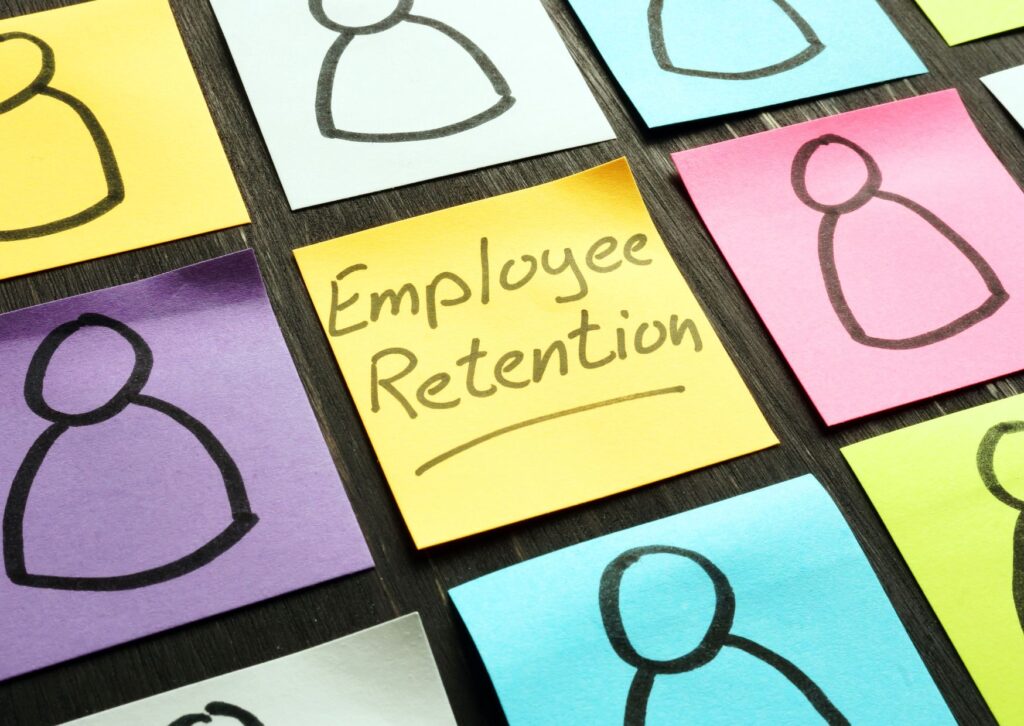
What are the Financial Benefits of Employee Recognition Ideas?
Employee recognition might seem like a soft, people-centric approach, but don’t be mistaken. It carries some serious financial benefits for organisations. Surprised? Let’s dig in!
To start with, recognition can boost productivity.
When employees feel acknowledged, they’re more motivated to give their best.
It’s like saying: “We notice your hard work, and we value it.” This validation can drive employees to higher levels of performance.
And guess what? Higher productivity equals better financial results.
Next up, we’ve got retention. If your employees don’t feel valued, they might consider looking elsewhere. But here’s the kicker: hiring new employees is expensive!
Recruitment, training, the time it takes for new hires to reach full productivity – all these costs add up.
Recognition, on the other hand, helps to keep your talent right where you want them: in your company. Lower turnover means lower recruitment costs.
It’s as simple as that.
Now, let’s talk about engagement. Engaged employees are more likely to deliver exceptional customer service.
This can lead to increased customer satisfaction and loyalty, which ultimately translates into repeat business and increased sales.
Last but not least, a culture of recognition can boost your company’s reputation.
This can make your company a magnet for top talent. And the better the talent, the better the bottom line.
To sum it all up, effective employee recognition is a strategic investment that can deliver impressive financial returns.
It’s a tool that promotes productivity, enhances retention, drives engagement, and attracts top talent. And the best part?
It doesn’t have to break the bank. From simple thank you notes to peer-to-peer recognition programs, there’s a wide range of cost-effective ways to show your employees that they’re valued and appreciated.

Aligning Employee Recognition with a Company’s Core Values and Goals
Aligning employee recognition with your company’s core values and goals isn’t just smart, it’s crucial. But how do you do it?
Here’s a hint: It’s all about clarity, consistency, and connection.
Firstly, make your company’s core values and goals crystal clear.
Employees can’t align with something they don’t understand. So, communicate these values and goals clearly, consistently, and in ways that resonate with your team.
Use stories, examples, and everyday actions to bring these values to life.
Next, intertwine recognition with these values.
When you recognise an employee, specifically highlight how their actions embody a core value or contribute to a company goal.
This shows your team not only what good performance looks like, but also why it matters. It reinforces the behaviours that drive success.
Then, create recognition programs that celebrate these values and goals.
For instance, if innovation is a core value, introduce an ‘Innovator of the Month’ award.
If a goal is to enhance customer satisfaction, recognise employees who go the extra mile to delight customers.
This creates a tangible link between recognition, values, and goals.
Remember to make it a two-way street. Encourage employees to recognise their peers for actions that exemplify your values or contribute to your goals.
This can boost engagement and foster a culture where everyone supports and celebrates each other’s successes.
Lastly, be consistent and committed.
The connection between recognition, values, and goals should be woven into your company’s fabric, not just a sporadic initiative.
Make it a part of meetings, performance reviews, and everyday conversations.
Aligning employee recognition with your company’s core values and goals is a powerful way to bring your vision to life, drive performance, and foster a vibrant, value-driven culture.
So, make recognition more than just a pat on the back. Make it a reflection of what truly matters to your organisation.

The Role of Leadership in Effective Employee Recognition
Effective employee recognition is not just an HR initiative.
It requires committed leadership. But why is leadership so crucial in this area? Let’s explore.
Leadership sets the tone. If leaders model recognition, others will follow suit.
Leaders need to regularly and publicly acknowledge their teams’ efforts.
This shows that recognition is valued and expected behaviour in the organisation.
Leadership also drives consistency. Employee recognition should be consistent and systematic, not sporadic or random.
Leaders should establish clear guidelines for what deserves recognition and ensure that it is applied fairly and equally.
Leaders provide the resources. Recognition programs need resources, whether it’s time, money, or technology.
Leaders must be willing to invest in these resources to make recognition an integral part of the workplace culture.
Leadership reinforces alignment. As we discussed earlier, recognition should align with the company’s core values and goals.
Leaders play a pivotal role in ensuring this alignment and reinforcing it through their own actions and communications.
Finally, leaders have a unique opportunity to make recognition personal and meaningful.
Leaders often have a broader perspective on an individual’s contributions and can provide recognition that carries weight due to their position.
In short, leadership is the backbone of effective employee recognition.
By modeling, promoting, resourcing, aligning, and personalizing recognition, leaders can cultivate a culture of appreciation that can drive engagement, productivity, and satisfaction.
Remember, recognition starts at the top!

Potential Pitfalls of Employee Recognition and How to Avoid Them
Employee recognition can work wonders, but when done wrong, it can have the opposite effect. Let’s look at some common pitfalls and how to dodge them.
1: Inconsistency – If recognition is sporadic or unpredictable, it can create confusion and demotivation.
Solution: Make recognition a regular and consistent part of your company culture.
2: Lack of authenticity – Hollow or insincere praise can harm trust and morale.
Solution: Always ensure that your recognition is sincere, specific, and tied to real accomplishments.
3: Favoritism – If recognition seems biased towards certain individuals, it can breed resentment among others.
Solution: Apply recognition fairly and equitably. It’s not just about recognizing the top performers but appreciating everyone’s contributions.
4: Irrelevance – If the form of recognition doesn’t resonate with the recipient, it can feel meaningless.
Solution: Tailor your recognition to the individual. Some people might appreciate public acknowledgment, while others may prefer a quiet thank-you.
5: Disconnect from core values – If recognition doesn’t reflect the company’s core values and goals, it can dilute your culture.
Solution: Align recognition with your company’s values and goals. Highlight how the recognized behaviour contributes to what your company stands for.
6: Overemphasis on competition – If recognition fosters unhealthy competition, it can damage teamwork and cooperation.
Solution: Promote recognition that appreciates collaboration and mutual support, not just individual triumphs.
In sum, effective recognition is more than just saying “good job”.
It’s about being consistent, authentic, fair, relevant, aligned with your company’s values, and fostering a supportive team environment.
Get these elements right, and you’ll turn recognition from a potential pitfall into a powerful tool for building a positive and productive workplace.

How Frequently Should Employee Recognition Be Given?
When it comes to the frequency of employee recognition, there’s no one-size-fits-all answer.
But here’s a rule of thumb: it’s better to err on the side of more rather than less.
Let’s explore why.
First off, recognition is not just for yearly performance reviews or company milestones.
It’s something that should be woven into the fabric of your everyday workplace culture.
When an employee demonstrates effort, achieves results, or embodies company values, it’s a recognition-worthy moment.
Keep in mind that recognition isn’t only about major accomplishments.
It’s also about acknowledging the small wins and everyday efforts that contribute to overall success.
A quick ‘thank you’ for a well-done task, a note of appreciation for helping a colleague, or a shout-out in a team meeting for consistent hard work – these little acts of recognition can make a big difference to an employee’s morale and motivation.
Remember, employee recognition isn’t about a rigid schedule.
It’s about creating an environment where achievements, efforts, and positive behaviours are acknowledged and appreciated in a timely manner.
In such a culture, recognition isn’t an event – it’s a norm.
So, don’t wait for a special occasion to recognise your team.
Make it a regular, ongoing part of your leadership approach.
When employees know that their efforts will be noticed and appreciated, it can fuel their motivation, engagement, and loyalty. And that’s a win for everyone!

Ensuring Meaningful and Appreciated Employee Recognition
Crafting meaningful, genuinely appreciated employee recognition is both an art and a science.
It requires sensitivity, understanding, and a touch of creativity. Here’s how to get it right.
First, make your recognition specific.
General praise can feel hollow. Instead, highlight exactly what the employee did well. Was it their creativity? Their teamwork? Their resilience?
Pinpointing the achievement makes the recognition more meaningful and instructive.
Second, personalise your recognition. Not everyone likes the limelight, and not everyone values the same rewards.
Some employees might appreciate public acknowledgment, while others may prefer a quiet thank-you.
Understanding your employees’ preferences can make your recognition more impactful.
Next, ensure your recognition is timely.
Don’t wait for annual award ceremonies to acknowledge a job well done. Recognise achievements and efforts as soon as possible.
Prompt recognition reinforces the positive behaviour immediately and feels more relevant.
Importantly, tie recognition to your company’s values and goals. This helps employees see how their individual efforts contribute to the larger picture.
It makes the recognition not just about personal success, but about the success of the company as a whole.
Finally, encourage peer-to-peer recognition. When colleagues acknowledge each other’s efforts, it fosters a culture of appreciation and teamwork.
Plus, recognition from peers who understand the work involved can feel especially meaningful.
Remember, the goal of recognition is to make employees feel valued and motivated.
So, keep it specific, personal, timely, aligned with your values, and open to everyone.
Do this, and your recognition won’t just be appreciated – it’ll be a catalyst for positivity, performance, and pride in your workplace.

Wellbeing Programs and Employee Recognition: A Vital Connection
Wellbeing programs and employee recognition might seem like two separate strands, but they’re intimately connected. Why?
Because when you recognise employees, you’re also contributing to their wellbeing. Let’s see how.
Wellbeing is not just about physical health.
It’s about mental and emotional health too.
Recognition plays a crucial role in boosting these aspects of wellbeing.
When employees feel acknowledged, it can improve their self-esteem, job satisfaction, and overall happiness at work.
Wellbeing programs often emphasise the importance of a positive work environment.
Recognition is a powerful tool in creating such an environment.
By appreciating employees’ efforts and contributions, you foster positivity, engagement, and a sense of belonging – all crucial for wellbeing.
Moreover, wellbeing programs that include recognition elements can increase participation.
For instance, a program that recognises employees for maintaining a consistent workout regime, managing stress effectively, or making healthy food choices can motivate others to join in and do the same.
In addition, recognition can be a vital part of wellbeing initiatives that address mental health.
Recognising employees for their resilience, their support to colleagues, or their openness about mental health challenges can foster a supportive, stigma-free environment.
In essence, recognition should be a central feature of any wellbeing program.
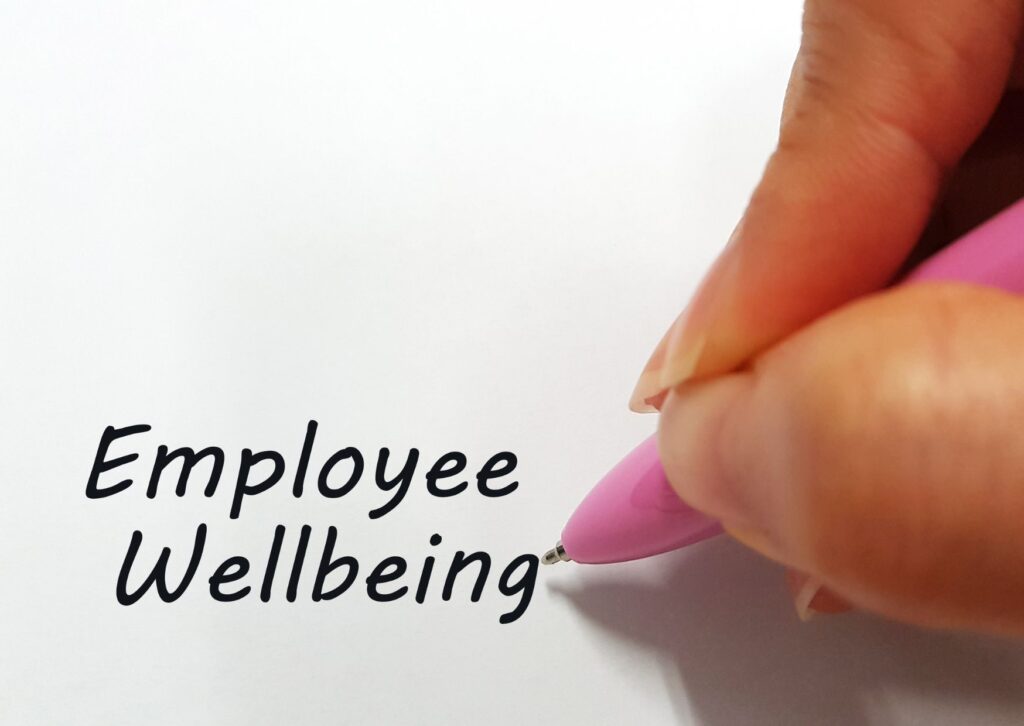
It’s not just about acknowledging good work but also promoting healthy behaviours, creating a positive environment, and fostering a culture of support and respect.
Remember, when you recognise your employees, you’re not just praising them – you’re boosting their wellbeing, too.
Employee recognition is more than just a nice-to-have – it’s a powerful tool for enhancing engagement, productivity, and wellbeing.
As we’ve explored in this blog, effective recognition requires thoughtful planning, alignment with company values, strong leadership, frequent and meaningful actions, and a keen understanding of what resonates with your team.
While pitfalls exist, they can be deftly avoided by fostering a culture of authenticity, consistency, and inclusivity.
Whether you’re praising the completion of a major project, acknowledging the small, daily wins, or celebrating participation in a wellbeing program, employee recognition plays a vital role in creating a positive and thriving workplace.
Let’s remember – a recognised employee is a valued employee, and a valued employee is a happy, productive contributor to your team.
Don’t miss out on the opportunity to harness the power of recognition in your workplace!
Author
Tyler Lowe – Health & Wellbeing Speaker
BSc Sport & Exercise Rehabilitation


